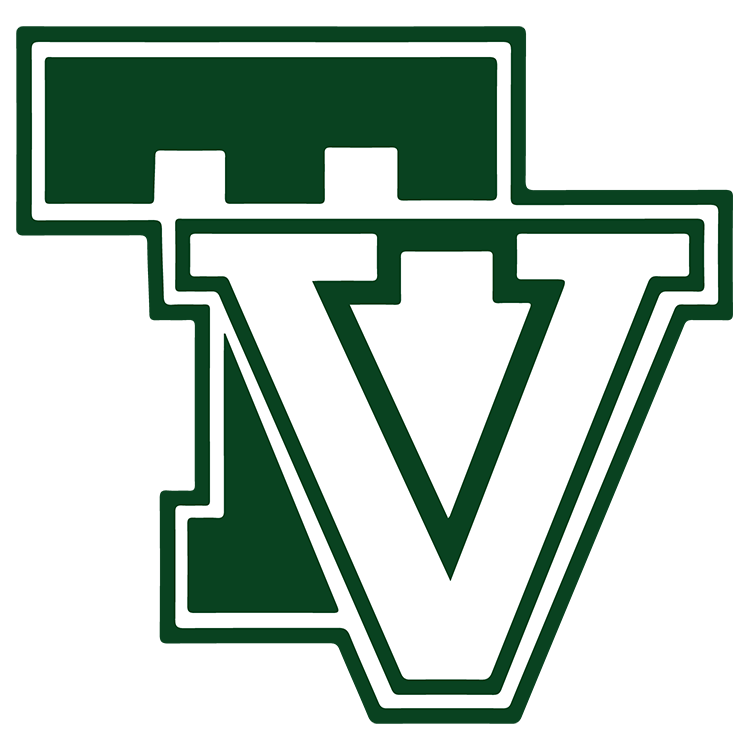Sports Medicine Guidelines
Mrs. Alyssa Fischer, LAT, ATC
afischer@tvsd.org
-
Athletic Injury Procedures
-
In order to be cleared each athlete must have a complete physical examination, complete a full health history, and sign the athletic code..
-
In the event of any injury, the coach will be responsible for immediately contacting the Athletic Trainer.
-
If the Athletic Trainer is not available, it is the coach’s responsibility for seeing that the injured player receives the necessary first aid and emergency care. Do what is necessary, but do not go beyond your training or what is expected of you! If an athlete is seriously injured, the coach will be responsible for immediately calling for an ambulance.
-
The coach is also responsible for notifying the parents of the injured athlete and the Athletic Trainer.
-
-
Athletic Injury Emergency Plan
-
In the event of an injury, the coach will be responsible for contacting the Athletic Trainer.
-
In the event that any athlete is in serious need of emergency care, the coach must immediately contact the Athletic Trainer or 9-1-1. Try to stay calm and reassure the athlete. Do not move the athlete unless absolutely necessary.
-
If an athlete has an obvious medical emergency or life-threatening injury, send an assistant to the nearest phone to call 9-1-1 and give the following information:
-
Your name
-
Your location
-
4897 N. Twin Valley Rd., Elverson, PA 19520 (High School Address)
-
770 Clymer Hill Rd., Elverson, PA 19520 (Middle School Address)
-
-
Nature of emergency
-
Phone number you are calling from
-
Locate the AED (high school main gym hallway, top floor P.E. building, or contact athletic trainer)
-
-
Once the emergency has been handled, the following individuals must be contacted:
-
Athletic Trainer- Alyssa Fischer
-
Parent or Guardian
-
Athletic Director – Taylor Parker
-
-
-
Athletic Training Room Procedures
-
Athletic Training Room Rules
-
No one is permitted in the Athletic Training Room without the Athletic Trainer or Coach.
-
Sign-in is required upon entering the Athletic Training Room.
-
No horseplay or offensive language is allowed.
-
Office is off limits to athletes.
-
All prohibited school policy items and tobacco, food, glass bottles and cans are not allowed in the Athletic Training Room.
-
-
General Procedures
-
The coach is responsible for acquiring and returning the medical kit before and after each season.
-
Water Coolers and Ice Kits must be taken to practice/game and returned daily.
-
All injuries should be reported to the Athletic Trainer as soon as they occur.
-
Once an injured athlete has sought professional care from the Athletic Trainer, the only way that the athlete can return to play is with written or verbal permission from the Athletic Trainer. If the athlete sought professional care from a physician, the only way that the athlete can return to play is with written permission from the physician.
-
Athletes with asthma should have an extra inhaler in the medical kit. Athletes who are allergic to insect bites or have any other type of allergy should have their epi-pen in the medical kit as well. Athletes who are diabetic should have their medication available.
-
Coaches must have their cell phone, medical kit, water cooler, ice kit and emergency contact information for all athletes available at all times. If you do not have a cell phone, know where the nearest phone is located.
-
Athletes with new injuries that need to be evaluated by the Athletic Trainer shall wait until all of the athletes that are cleared to play receive their treatment. Athletes who have a home or away game will be given priority.
-
If there is any doubt regarding an athlete’s participation status, the coach should contact the Athletic Trainer immediately. The athlete should not participate until the status is known.
-
-
-
Thunder/Lightning Procedures
-
Any subsequent thunder or lightning after the beginning of the 30 minute count, reset the clock and another 30 minute count should begin.
-
Thirty-minute rule. Once play has been suspended, wait at least 30 minutes after the last thunder is heard or flash of lightning is witnessed prior to resuming play.
-
When thunder is heard or lightning is seen, the thunderstorm is close enough to strike your location. Suspend play and take shelter.
-
The athletic trainer has the final say on lightning calls.
-
-
Concussion Procedures
-
Any athlete that suffers a concussion must be cleared by a licensed physician.
-
After clearance from a physician, the athlete MUST go through the 5-day progression to return to sport with the Athletic Trainer BEFORE being cleared to play without restrictions.
-
The 5-day progression is set by the overseeing physician of the Athletic Trainers at Twin Valley.
-
Once the athlete completes the 5-day progression to return to sport, they will be cleared without restrictions.
-
The Twin Valley Sports Medicine staff uses the following return-to-play protocol:
-
Day 1: Full Day of normal cognitive activities and walking at school without return of signs or symptoms. Introduce light aerobic exercise –15-20 minutes on stationary bike, no weight lifting, resistance training, or any other exercises.
-
Day 2: Moderate aerobic exercise – 30-45 minutes of conditioning running and light weight lifting.
-
Day 3: Moderate aerobic exercise and non-contact training drills.
-
Day 4: Non-contact practice and normal training activities.
-
Day 5: Clearance to participate in full practices/physical education classes.
-
Day 6: Released!
-
Each athlete will begin with Day 1. If any symptoms return during the activity, the athlete will stop the activity immediately and return to the training room the next day. If the athlete is symptom free, the athlete must wait a full 24 hours before attempting Day 1 again. The athlete cannot progress to the next day in the cycle until passing the previous day.
-
-
